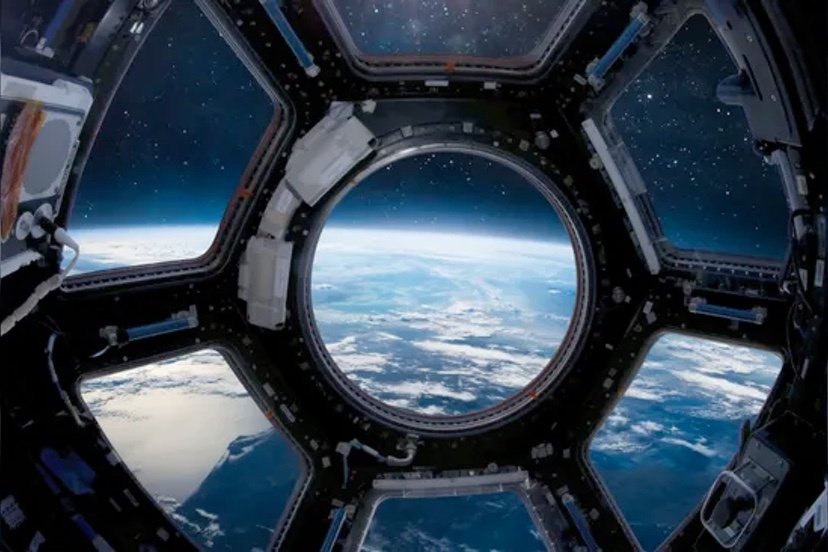There are walls… and then there are walls.
Many years ago, I heard someone claim that the Great Wall of China is the only human-made structure visible from space.
Actually, the original claim was it was the only “man-made” structure. But we now prefer the term “human-made” because maybe some women worked on it? And maybe even some people who identified as gender-neutral?
Some of us thought this was true — that you could see the Great Wall from space — back when space capsule windows were like tiny plastic portholes. Back in the early days of space, scientists were concerned that a thoughtless astronaut would accidentally open a window to let in some fresh air. (A bit stuffy in those early space capsules.). The windows are much larger now. But you still can’t open them.
There was a popular theory around that same time, that the Great Wall had been built to keep out the invading Mongol hordes, led by Genghis Khan. A less popular theory is that the Great Wall was built to keep the Chinese from leaving, and joining Genghis Khan.
Either way, the answer to whether you can see the Great Wall from space, depends on what you mean by “space”.
Space is a pretty big idea. In fact, as far as scientists can tell, it’s about as big as the entire universe. But Earthlings have another definition for “space” which aligns with certain practical considerations, such as, how high do you need to fly, if you’re a billionaire and you want to claim you’ve been to “space”?
To accommodate these billionaires, scientists have defined “space” as the Kármán line, named after physicist Theodore von Kármán (who was not a billionaire.) This line is widely considered the boundary between Earth and space. Typically, it’s defined as 100 kilometers above our planet’s surface. (That’s 62 miles, but who can remember “62” in a trivia contest?)
So, what can be seen from that far up? On a clear day, would someone at the Kármán line be able to see the Great Wall of China?
Or the Great Pyramids of Giza?
Let’s begin in America, shall we? No, you can’t see Trump’s border wall — some flimsy steel panels — from space. But you can see the Bingham Canyon Mine.
The Bingham Canyon Mine, located about 20 miles southeast of Salt Lake City, is the largest human-made excavation ever to have existed and is also the deepest “open-pit” mine anywhere in the world. The mine is so substantial that it is not only visible from the Kármán line but also reportedly could be seen by astronauts aboard NASA’s Space Shuttle, which orbited at an altitude of between 200 and 300 miles.
There’s a bit of a disagreement among astronauts about whether the Pyramids of Giza can be seen with the naked eye from space. British astronaut Tim Peake claimed that they can’t, but he acknowledged that the massive structures can be viewed relatively clearly through an 800mm lens. Which is totally cheating.
However, Leroy Chiao, a former NASA astronaut and International Space Station commander, insists he spotted the pyramids while in orbit.
“There is much that can be seen from the ISS, even with the naked eye,” Chiao told Live Science in an email. “For example, I once found the Great Pyramids with a telephoto, and I could pick the two big ones out with the naked eye as two tiny dots — so long as the lighting and weather conditions were good…”
So, what about the Great Wall of China, the most famous claim of all? This myth has been officially busted.
The Great Wall of China cannot be seen from ‘space’ with the naked eye, and it’s definitely not visible from an orbiting spacecraft at 300 miles up. Leroy Chiao — who took the first picture of the Great Wall of China from space — admits he couldn’t see the wall when he took the photo.
Which indicates, to me, that you couldn’t see Genghis Khan’s Mongol hordes either, if you have been in earth orbit in 1209 AD.
But now China’s Great Wall has become a tourist attraction, just like the Great Pyramid of Giza. In fact, nearly everything that once kept out Mongol hordes has become a tourist attraction. (The Bingham Canyon Mine being an exception.)
In 2024, the true Great Wall of China is not a stone structure that runs 13,200 miles across the most populated country in the world.
The true Great Wall of China is internet technology that prevents us Americans from knowing what’s really going on in China.
You can see the new Great Wall from space, easily, if you have your iPhone with you.

